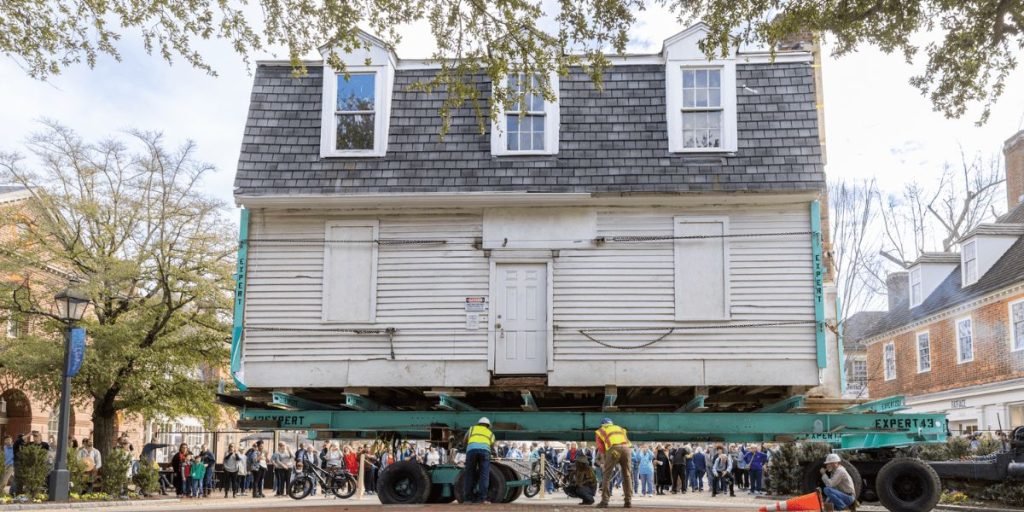Before finding a permanent home at Colonial Williamsburg, the modest white cottage on William & Mary’s campus had several lives. The Bray-Digges home served as a residence, the university’s military science department, and an Army ROTC office.
Terry L. Meyers, chancellor professor emeritus of English at the university, began researching the building’s history about 20 years ago, believing it to be from the 18th century. It would take decades to unravel the mystery.
What Was the Mystery House?

To determine the cottage’s age and original use, the university collaborated with specialists from Colonial Williamsburg, “the world’s largest living history museum” and a 2024 winner of our annual South’s Best Awards. It was difficult to determine when it was first created because it had been changed over time. Researchers extensively examined the building’s architecture and materials, attempting to tie it to historical sources.
In 2020, a sample of wood revealed the entire story: it was the Williamsburg Bray School, one of the country’s first schools for Black students, both free and enslaved.
What Was the Williamsburg Bray School?

The Associates of Dr. Bray, a London-based charity, created various schools throughout the colonies to provide African Americans with a “religious education”. Benjamin Franklin suggested that one be opened in Williamsburg.
From 1760 to 1774, Ann Wager, a white teacher, taught up to 400 children aged 3 to 10 in the two-story facility. Lessons concentrated on Christianity and reinforced slavery, but records suggest that Wager taught her students how to read and write, as well as other skills such as sewing. More than just a historic edifice, the Bray School provides a unique glimpse into the lives of these youngsters.
Tonia Cansler Merideth is an oral historian with the William & Mary Bray School Lab, which was established to document and preserve the school’s history while also connecting with students’ descendants.
Merideth noticed that the lessons taught in the school extended well beyond the structure itself. “Two of the free students, Mary and Elisha Jones, returned to their community and taught them how to read and write, becoming the first black teachers in Virginia,” she goes on to claim.
Also, Read:
- Discover The Largest Nuclear Power Plant in Florida
- This is the Oldest Church in Hawaii Dating Back to 187 Years
How to Visit The Bray School?

Last year, the cottage was relocated to Colonial Williamsburg via flatbed truck, becoming the 89th original building to be preserved. After meticulous renovations, it is planned to reopen to the public this fall. Currently, the museum offers walking tours of significant Bray School sites.
Matt Webster, the museum’s executive head of architectural preservation and research, describes the building as a unique example of survival. “Often the houses of the gentry survive, while the structures of the middle class, lower class, and enslaved are lost to make way for progress,” he goes on to say. “The marks left behind in this building such as fingerprints in bricks, saw marks on framing, and worn floorboards and handrails return some of the humanity to individuals whose stories have been historically overlooked.”
Read More:
- Scientists Revealed The Biggest City in Mississippi is Built Atop of Volcano
- Delve into the Oldest Settlement in the American West in Montana